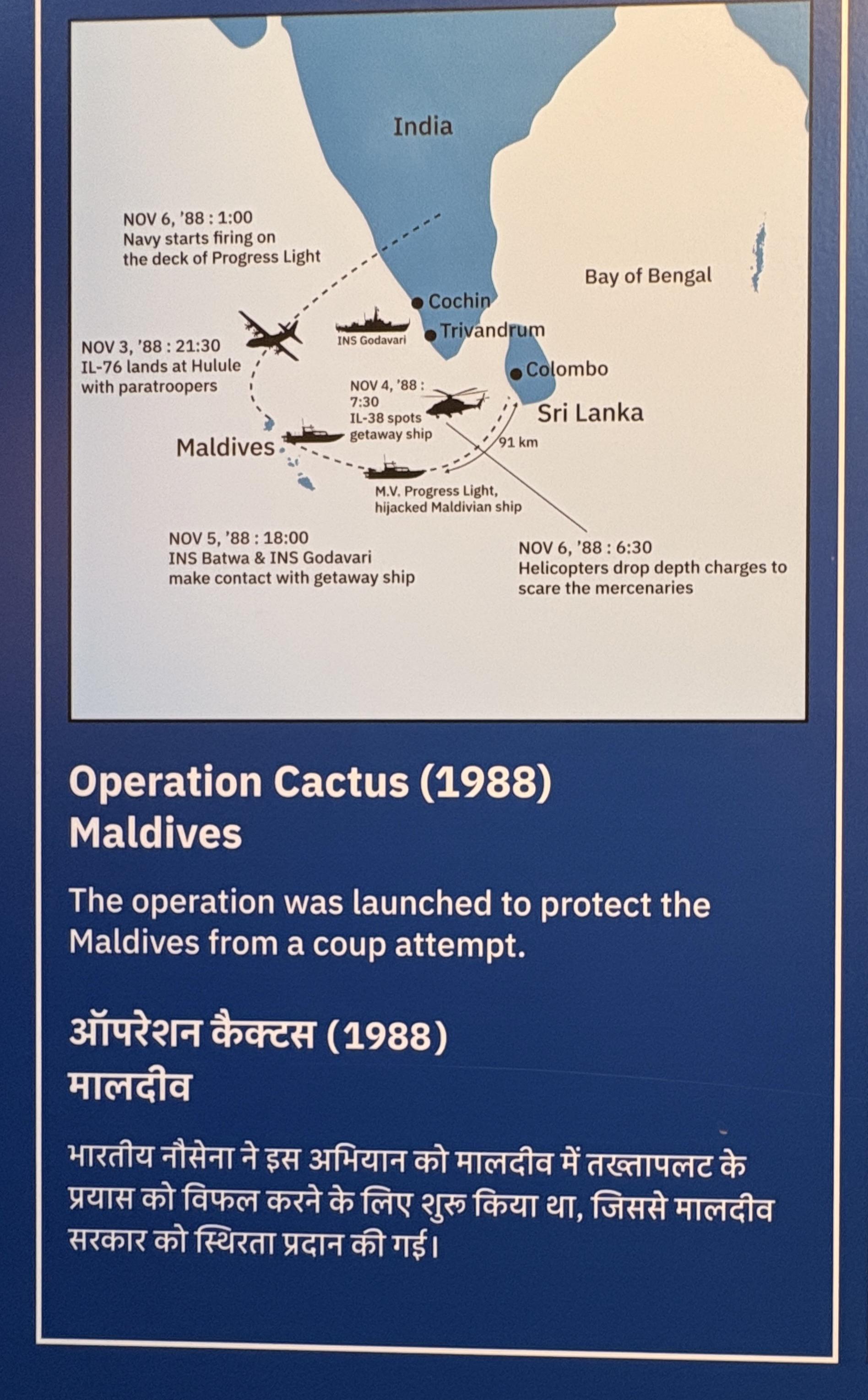Map of Operation Cactus Timeline


David Chen
Data Visualization Specialist
David Chen is an expert in transforming complex geographic datasets into compelling visual narratives. He combines his background in computer science ...
Geographic Analysis
What This Map Shows
The Map of Operation Cactus Timeline provides a detailed chronological account of the Indian Armed Forces' intervention in the 1988 Maldives coup attempt. It visually represents the key events, locations, and military movements during this significant historical incident. This map serves as a crucial educational tool, illustrating not only the geographical context but also the timeline of actions taken by Indian forces to safeguard the Maldives from a coup led by Maldivian plotters, supported by Sri Lankan mercenaries.
Deep Dive into the 1988 Maldives Coup Attempt
In November 1988, the Maldives faced an unprecedented threat when a group of around 80 mercenaries launched an attack aimed at overthrowing the then-President Maumoon Abdul Gayoom. This coup attempt was not merely a local uprising; it was a well-coordinated effort involving foreign mercenaries from Sri Lanka, showcasing the complex geopolitical dynamics of South Asia at the time. Interestingly, the coup's failure was significantly influenced by the timely intervention of the Indian military, which was prompted by a distress call from the Maldivian government.
The Indian Navy and Air Force acted swiftly, deploying forces to the region. The operation, known as Operation Cactus, involved the use of naval warships and aircraft to transport troops to the Maldives. This intervention not only quelled the coup but also underscored India's role as a regional power in South Asia. What's fascinating is how the geographical proximity of India to the Maldives played a crucial role in the rapid response, highlighting the importance of geography in international relations and security.
As the map illustrates, the primary operations were centered around Male, the capital of the Maldives, with significant focus on the local islands where the mercenaries had established their foothold. The Indian Armed Forces executed a well-planned assault, leading to the capture of the mercenaries and the restoration of the legitimate government.
The aftermath of Operation Cactus had lasting implications for the Maldives and the broader region. It solidified India’s influence in the Maldives, promoting a sense of security and stability in the Indian Ocean area. The coup attempt and its foiling also sparked discussions about sovereignty, intervention, and the dynamics of foreign relations, particularly in the context of small island nations.
Regional Analysis
The geographical context of the Maldives is critical to understanding the events of Operation Cactus. The Maldives is an archipelago consisting of 26 atolls spread over approximately 90,000 square kilometers. Its dispersed island geography poses unique challenges in terms of defense and governance.
In the map, Male stands out as the focal point, not just politically but also geographically. The proximity of Male to India, about 700 kilometers, enabled a swift military response. However, the islands themselves are vulnerable due to their low elevation and scattered nature, which complicates logistics and military operations.
Comparatively, the other islands in the archipelago played lesser roles in the coup attempt due to their remoteness. The map highlights the strategic importance of Male and surrounding islands, emphasizing how geography can dictate military and political strategy. For example, islands like Addu Atoll and Fuvahmulah, located to the south, were less involved in the coup but remained significant as potential staging grounds for any future incursions.
Significance and Impact
Operation Cactus is a vital case study in the realm of geopolitical strategy, especially in the context of small states. It illustrates how geography influences military operations and international relations. The Maldives, a small island nation, found itself at the center of a significant geopolitical event, demonstrating that even minor players can have considerable implications on the global stage.
The coup attempt shed light on the vulnerabilities of island nations to external threats, leading to increased security cooperation among South Asian countries. Moreover, it paved the way for India to enhance its naval capabilities in the Indian Ocean, an area of strategic interest given the increasing presence of global powers.
Looking ahead, the implications of Operation Cactus continue to resonate. As geopolitical tensions rise in the Indian Ocean region, understanding the historical context provided by such maps becomes crucial for policymakers. Future trends may see a renewed focus on collective security arrangements among Indian Ocean nations, emphasizing the importance of geographic positioning in global diplomacy.
Overall, the Map of Operation Cactus Timeline not only serves as a historical record but also as a reminder of the intricate connections between geography, security, and international relations. It invites us to consider how geographical factors will continue to shape the future of small states in a complex world.
Visualization Details
- Published
- September 26, 2025
- Views
- 66
Comments
Loading comments...